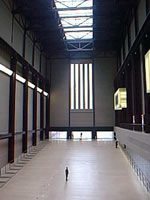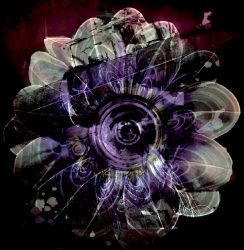
…And while in London, the inevitable visite to the Tate Modern Museum brought an unexpected auditive experience:Bill Fontana’s ‘Harmonic Bridge’ sound installation.
Just imagine a massively immersing multi-channel sound in the Turbine Hall pictured above!
In this installation, the Millennium Bridge acts as a giant string instruments. The processed sounds can be heard in the Tate Turbine Hall, as well as in London Underground’s Southwark Station (both locations are linked by this Millennium Bridge).
You can find more information HERE:
“A network of vibration sensors have been placed within the bridge turning it into a vast stringed instrument which plays an ever-changing musical composition based on it’s surrounding environment. The noise created by pedestrians passing overhead, the wind, bicycles and the architectural elements which make up the bridge have been transformed into a sound installation which can be heard simultaneously in Tate Modern’s Turbine Hall and also at Southwark Underground station.”
The sound from the bridge is picked up through “accelerometers” and is processed and transformed into “live sonic mappings”. As this sounds like a live (real time) process, I wondered why the sounds faded sometime to periods of silence – as this resulted in a bit of a pre-recorded feel..
The answer is in the project description on the artists website: “The work would enter the space as a slow moving wave, emerging from the ground tone of the background hum and then slowly decaying back into it.”
This installation is extended until august, 23. So when you’re heading for London be sure to visit the Tate Turbine Hall. Use the Underground, get off at Southwark Station and be sure to bang the bridge heavily while crossing it!



Beautiful indeed (imagining this in surround). Reminds me of the stuff Alan Lamb was doing: I met him during the Immersion Festival in Melbourne. He connected pickup-elements to telegraph-wires in Australia’s outback… Wow, what a great sound that was.
More on that and him: http://www.sounddesign.unimelb.edu.au/web/biogs/P000277b.htm